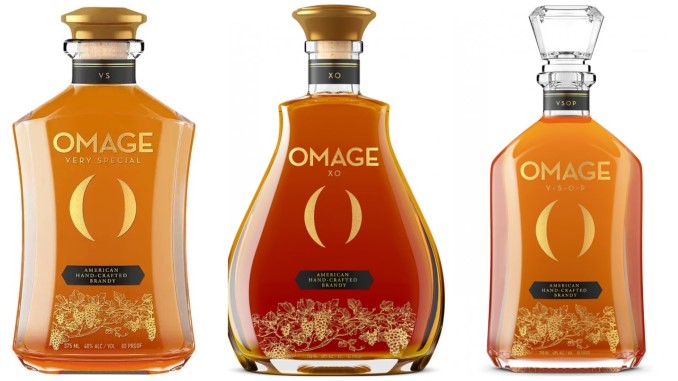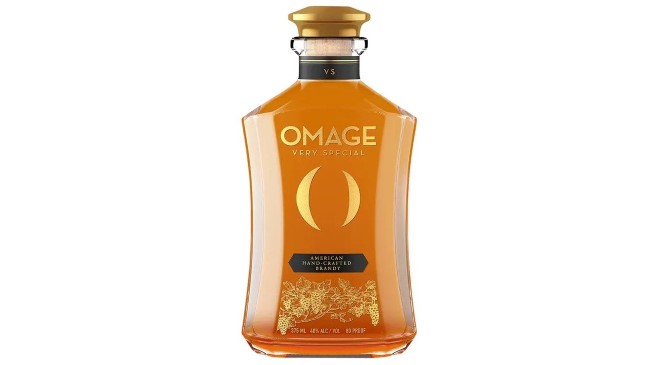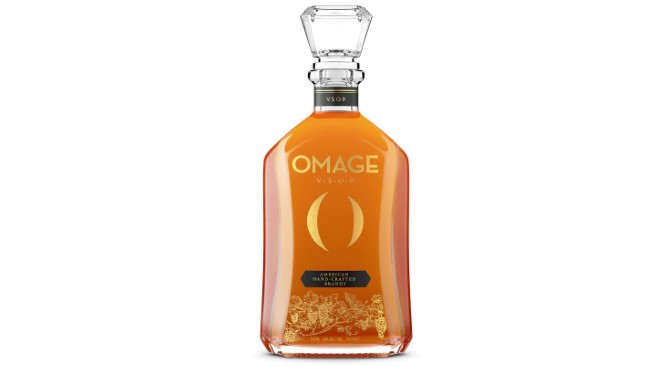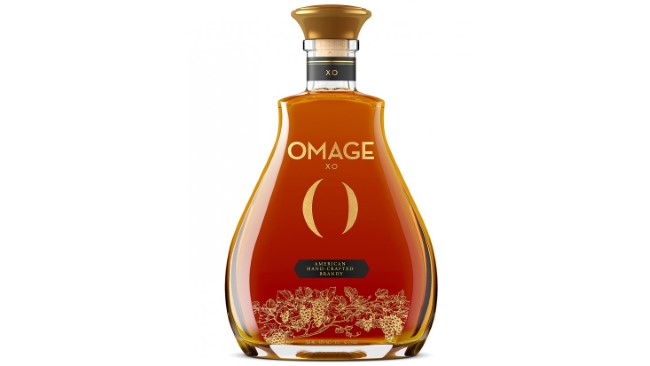Tasting: 3 California Brandies from Omage (VS, VSOP, XO)
Photos via Omage
Of all the major styles of distilled spirits, brandy always seems to occupy the position for me of “I should really drink this more often,” but rarely do I seem to follow through on that vague intention. For years, I didn’t really think I had much interest in American-made brandy, but subsequent tastings proved me wrong, illustrating how the spirit can be just as exciting to the aged spirits drinker as various styles of whiskey or rum. And yet, I still don’t find myself sampling new brandy releases all that often … which mirrors the way the spirit is all too often overlooked by U.S. whiskey geeks in particular, who are frustratingly likely to spend all of their time and energy on bourbon.
So today, we’re going to taste some brandy. Specifically, I’m sampling the core product lineup of Omage Brandy, a newly launched concept from The Brand House Group. This is California brandy, produced from four grape varietals grown in the Central Valley. A quick explainer on terminology: Although Omage is produced largely with the traditional methods of méthode cognaçaise, you won’t see it referred to as “cognac.” As we’ve written previously on that question:
Cognac may only be produced in the Charente and Charente-Maritime regions, and is typically made with a single white grape varietal, Ugni blanc. It’s distilled in copper pot stills and aged at least two years in French oak barrels from Limousin or Tronçais, but is often aged far longer. Armagnac, by comparison, is produced in the Armagnac region of Gascony, and is distilled from a wider range of grape varietals that include Baco 22A, Colombard, Folle blanche and Ugni blanc. Notably, it is traditionally produced in column stills rather than pot stills, which obviously makes for a significantly different spirit overall.
American-made brandy can notably be made from any grape varietal, which allows distillers a greater degree of freedom and creative input. So too is Omage made with something of a hodgepodge of techniques that are used in both the maturation of French brandies and American whiskey, including the use of both pot and column stills, and the use of a bevy of different barrel types. This apparently includes “charred and toasted American bourbon and French oak barrels, depending on style,” implying that the brand uses both newly charred virgin oak and re-used barrels. These elements are more than enough to push the result far away from the definition of “cognac” and into distinct territory.
So with all that said, let’s get to tasting these three expressions—the 2-year-old VS, 4-year-old VSOP, and 6-year-old XO. All three weigh in at a basic 40% ABV (80 proof).
Omage VS BrandyMSRP: $26

I’ll tell you one thing: You certainly can’t complain about the price point here, as the $26 MSRP of Omage VS compares very favorably against most of the other entry level aged brandy on the shelves, especially from a relatively small operation. Both the VS and VSOP, in fact, are clearly meant to be quite affordable brands.
On the nose, this one is sweet and perfumey. I’m getting toasted honeycomb, heavy vanilla extract and pear-like fruit. The vanilla follows through in a big way on the palate, being almost a touch overwhelming at times, backed up by toasted oak and baked apple. The ethanol is pleasantly gentle, though heat does bloom in the chest. Overall, this one is quite sweet, even for a brand styling itself as less cloying than some American brandy, with a level of vanilla in particular that will be attractive to some but strikes me as a little on the blunt side. I find myself looking for more subtlety, although once again at this price point it’s a more than fair deal.
Omage VSOP BrandyMSRP: $36

Omage’s VSOP expression has been aged for 4 years, and the difference is certainly striking in both the bottle and the glass—oddly, this one stands out for the fact that it is not only much darker in color than the VS, but a shade or two darker than the 6-year-old XO. I’m not sure whether this is intentional, given that the press images (seen above) end up being lighter than the actual liquid in the bottle, but I would suspect that perhaps the flavor profile of the VSOP has simply been affected more by the newly charred oak involved, and thus drawn more color in the process. Like all three selections, this one is 40% ABV (80 proof).
On the nose, I’m getting toasted bread and nuts, along with a bit more notable spice. There are hints of oak here, and traces of licorice and anise. There’s definitely more oak on the palate, along with impressions of stone fruit, and the sweetness has been more closely balanced by the accompanying oak. All in all, this is simply a better balanced brandy flavor profile, although of the three bottles I would say that the VSOP might actually have the most assertive oak notes. That would make sense, given the color.
Omage XO BrandyMSRP: $90

Omage’s XO Brandy (6 year old) takes a rather dramatic step up in MSRP at $90, which is quite a leap from $36 for an additional two years of age statement. That makes me wonder whether there’s some older spirit in the blend here, or if perhaps the brandies blended for Omage XO are being largely drawn from more expensive barrels, such as the French oak. Regardless, it could make this brand considerably more difficult for a brandy neophyte to pull the trigger on, but that’s where the accessible price points of the VS and VSOP come into play.
The nose on Omage XO is actually on the more subtle side, with delicate oak and nuttiness, along with traces of cocoa and florals. On the palate, there’s delicate spice and fruit that develops in a darker direction, evoking currant or blackberry. Overall this one strikes me as more fruit-forward than the others, in fact, and the oak has been more fully integrated into the overall profile than in the more notably oaky VSOP. All in all, a skillful interplay between dark fruit and subtle baking spice, with very mild ethanol that allows for easy drinking and contemplation.
Jim Vorel is a Paste staff writer and resident beer and liquor geek. You can follow him on Twitter for more drink writing.







































